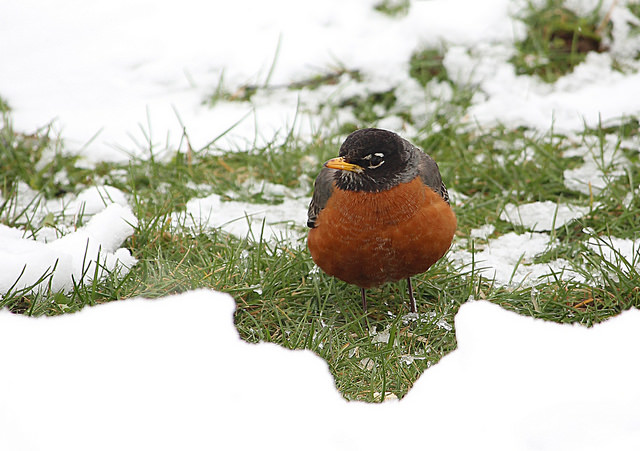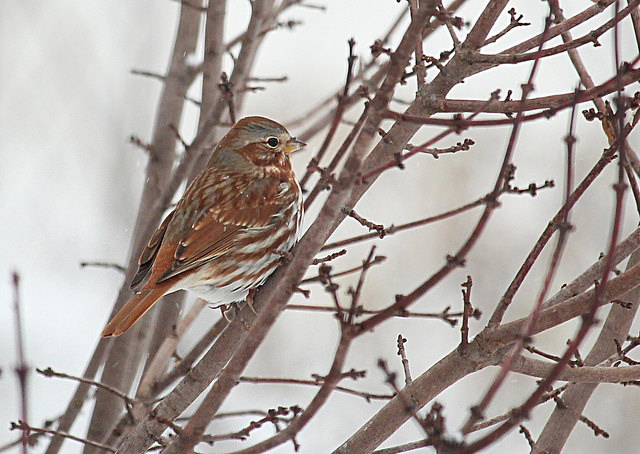There are some nature facts that people recite by rote. Things like “Birds go south in the winter.” and “Birds migrate to warmer places to spend the winter.” These facts have been repeated so often that they are taken for granted.
In fact, they are mostly true, but people generally fail to understand that we do not live in the cold, frozen north. There are places much colder and much farther north than this area. Many birds that only live in the north migrate through this area to get to the warmer south. Other birds that live in the far north migrate to this area, not just for the warmer climate, but for food.
The best way to learn about birds is to forget everything you have ever been told. Most birds do not live in nests. All birds do not eat worms. All birds do not migrate. Some owls only come out in the day.
Weird, isn’t it? Birds build nests to raise their young and rarely use them for anything else. Only a couple of local birds eat worms. Many eat seeds, insects and fruit. Some birds stay right here all year long. Some owls, like Short-eared Owls, come out in the daytime. Nature is full of contradictions. As soon as something seems like a hard and fast rule, an exception to it will appear.

Many robins spend the winter in this area. Photo by Jeff Tome
If I could shake your head like an etch a sketch and clear all the misconceptions about birds, I would. Since that is not possible, or at least not possible yet, there are some things you should know about birds that are fascinating.
We live on something called the Atlantic flyway. It’s something of a bird highway in the sky where birds migrate at night. The Audubon Community Nature Center has a microphone on the roof to record the sounds of this imaginary highway. Birds cheep and chirp as they fly and a dedicated birder can identify what is flying overhead. (I cannot.)
For many birds, we are just a stop on the bird highway. They stop over for a day to eat, take a nap, and check out the sights. Birdfeeders fill with these birds for a few days and then they disappear till spring, when they take the imaginary air highway north again.
Many of these birds have already passed through, but a few are still passing through. The cooing hoots of large flocks of Tundra Swans echo overhead. These huge white birds fly from the Arctic tundra to Chesapeake Bay, stopping on lakes, rivers and ponds along the way to rest and eat.
Other birds are smaller and less noticeable. These are the ones I used to call LBBs. Little Brown Birds. The words that I have used in the past to identify them are not suitable for print. It took many years and much choice language from me to turns those LBBs into individual types of birds.
Now I watch for them with anticipation. Big, burly Fox Sparrows dominate the little birds under the feeder. White Crowned Sparrows look like they are wearing odd bicycle helmets. These birds are traveling along the flyway highway and soon gone. Rarely do they stick around.

Snowy Owls were a popular winter bird three years ago. They only visit in the winter.
Photo by Jeff Tome
Other northern birds spend the entire winter here. Tree Sparrows arrive in the fall and stick around until spring. They are non-descript little brown birds with a dark dot in the center of their chest. Many juncos migrate here from Canada and spend the winter. The ones here are usually gray, with a bit of white underneath. They are the males. Females are brown and usually go further south.
Perhaps the most exciting winter birds are the ones that are only seen every few years. The Snowy Owls that showed up three years ago made a huge splash. This bird only migrates this far south when there is a lack of food in the North. They have been seen outside of Erie, Pa and Rochester, NY this year, but I have not heard of any locally.
Other large arctic birds show up every year. Huge Rough-legged Hawk make the local Red-tailed Hawks look like the smaller, runty football team that just can’t quite compete. They are often seen perched on telephone poles above huge snowy fields.
Another winter hawk, easily identified by its white rump, is the Northern Harrier. It, too, loves the big open fields. Harriers fly over them slow and low with tippy wings in a V shape. Harriers are also called Marsh Hawks and are frequent visitors to the marshes at Audubon.
There is a lot more to know about winter birds, but only so much time. Visit the nature center for more information, or just go for a walk around your neighborhood and take a look around.
Jeff Tome is a Senior Naturalist at Audubon Community Nature Center.


Recent Comments